“Mr. Pine lived on Vine Street in a little white house.”
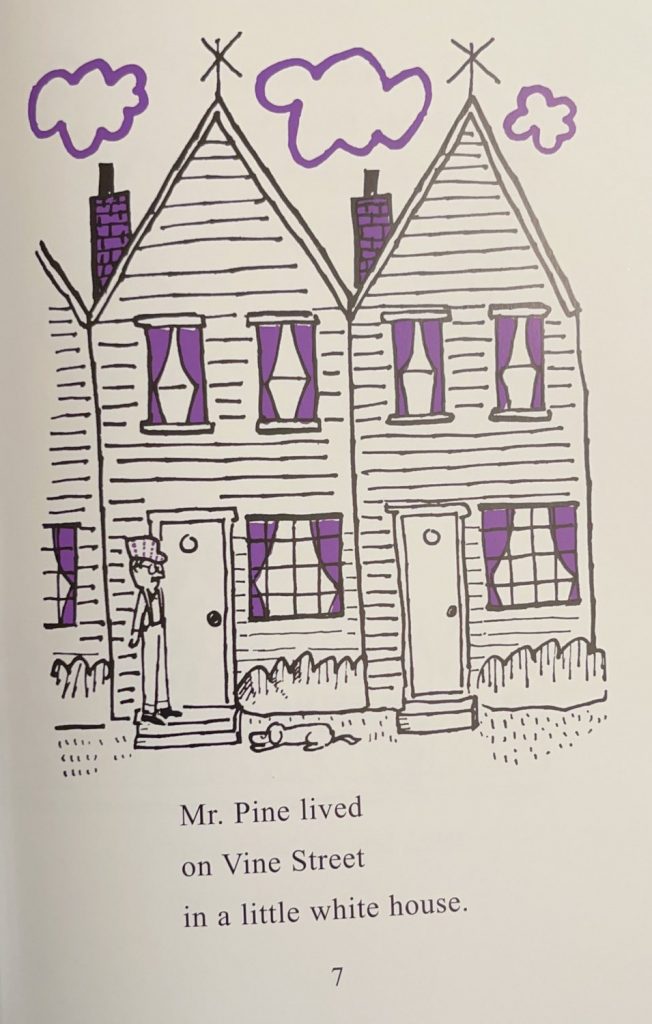
Which was fine. But there were fifty identical white houses on Vine Street. Mr. Pine just wanted to be able to tell which house was his.
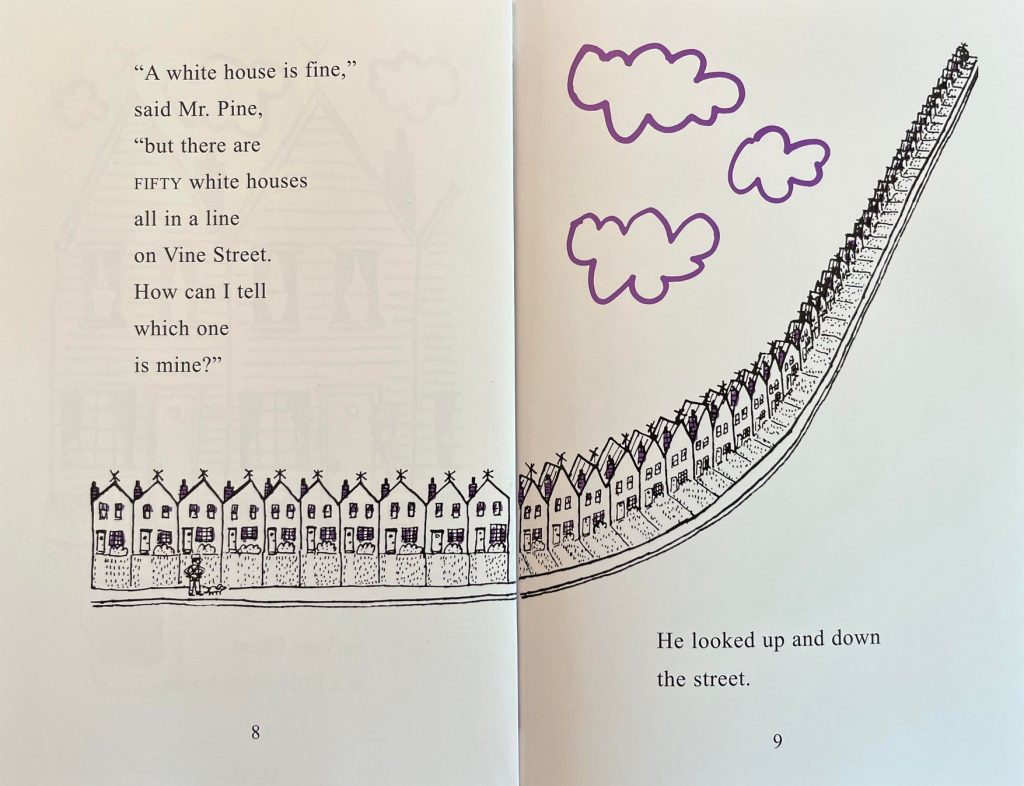
He has an idea! He plants a little pine tree in his front yard so his house will look different from everyone else’s. His neighbors like the idea so much, they all do the same. The next day, once again, his house looks like all the other forty-nine houses on the street. So he plants a big bush next to the little pine tree. Again, the neighbors all follow suit, thus foiling his plan.
His next idea is to paint his house purple. The man at the paint store tries to talk him into using a different color, but Mr. Pine is adamant. When Mr. Pine decides to do something, he does it. Despite two falls from the ladder (and a purple nose), Mr. Pine gets up and goes back to work.
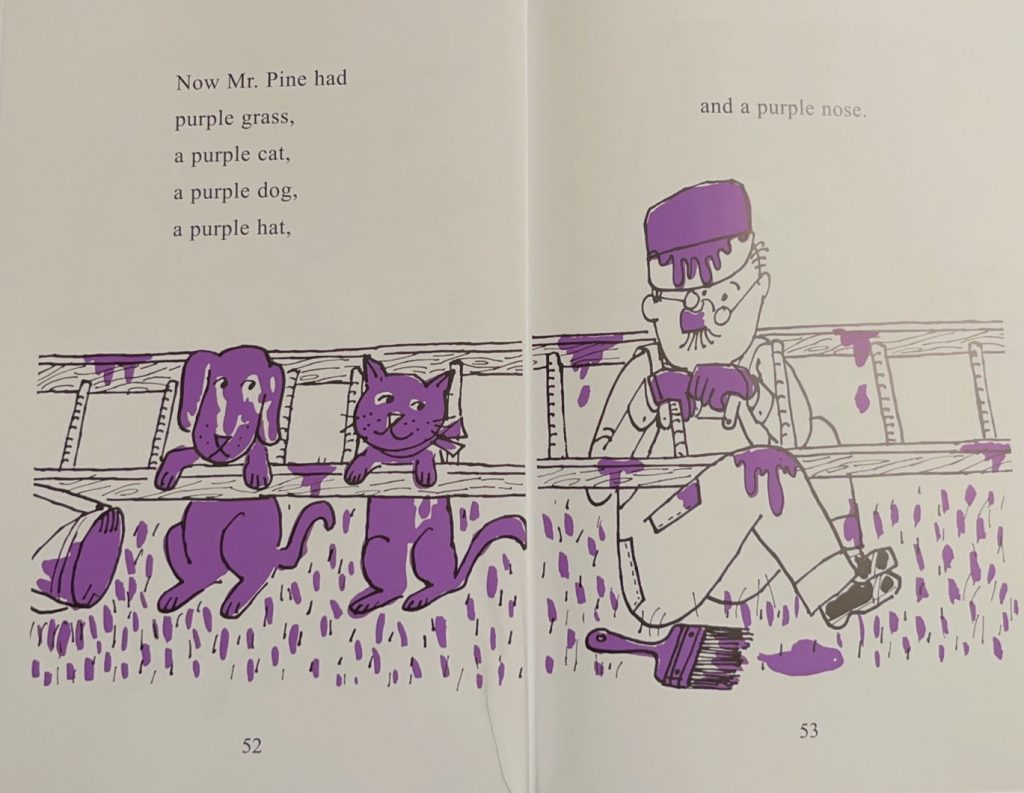
Once again, the neighbors think Mr. Pine’s idea is wonderful, and they all decide to paint their houses. Will there be fifty purple houses on Vine Street now?
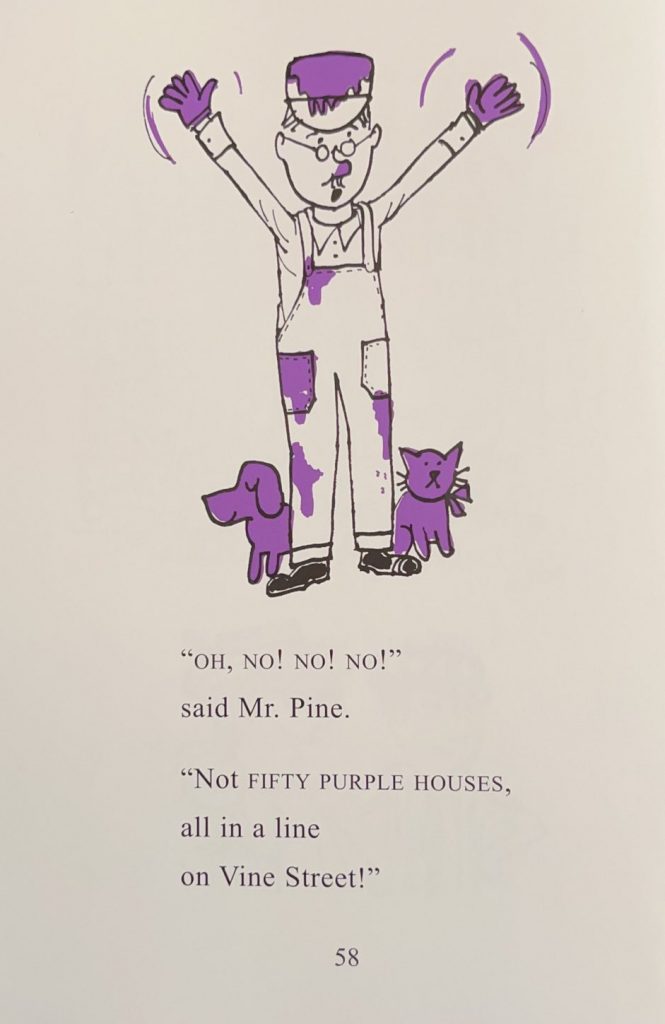
This book, published in 1965, was a Wonder Book Easy Reader. In the original introduction, we are told that only 175 words were used in the entire story. This means that a beginning reader will experience a high rate of success from the very first page.
It also means that some real ingenuity went into making this an appealing and memorable story, while maintaining the basic vocabulary. A picture is worth dozens of words, each time we’re told Mr. Pine “did this.”
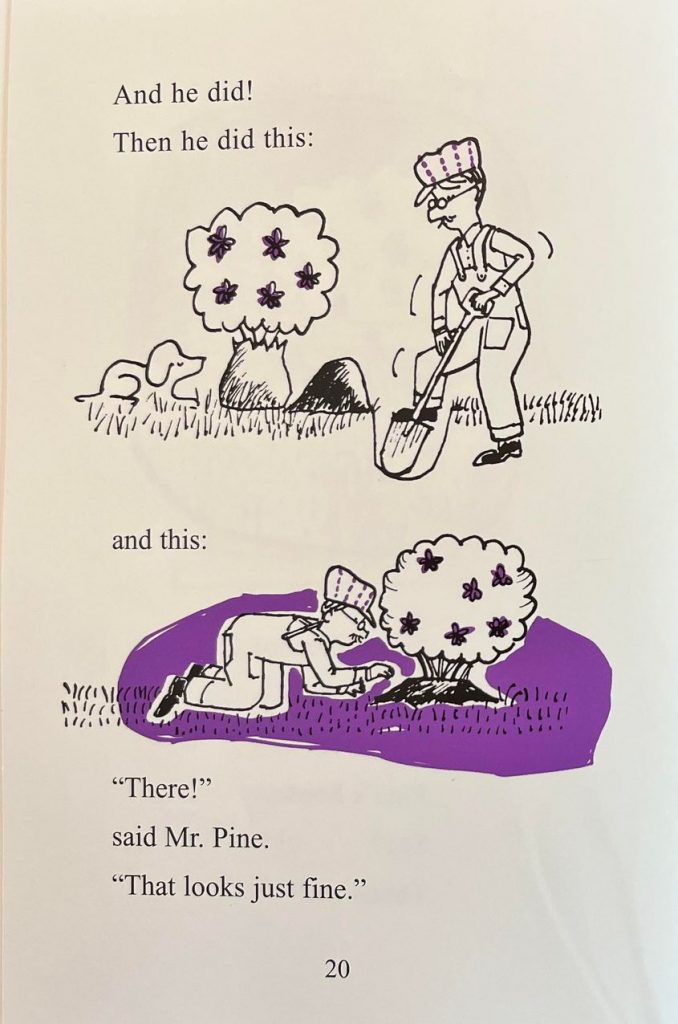
With economy of line and a few dashes of color, Mr. Kessler expresses more movement than the repetition of “round and round” could do.
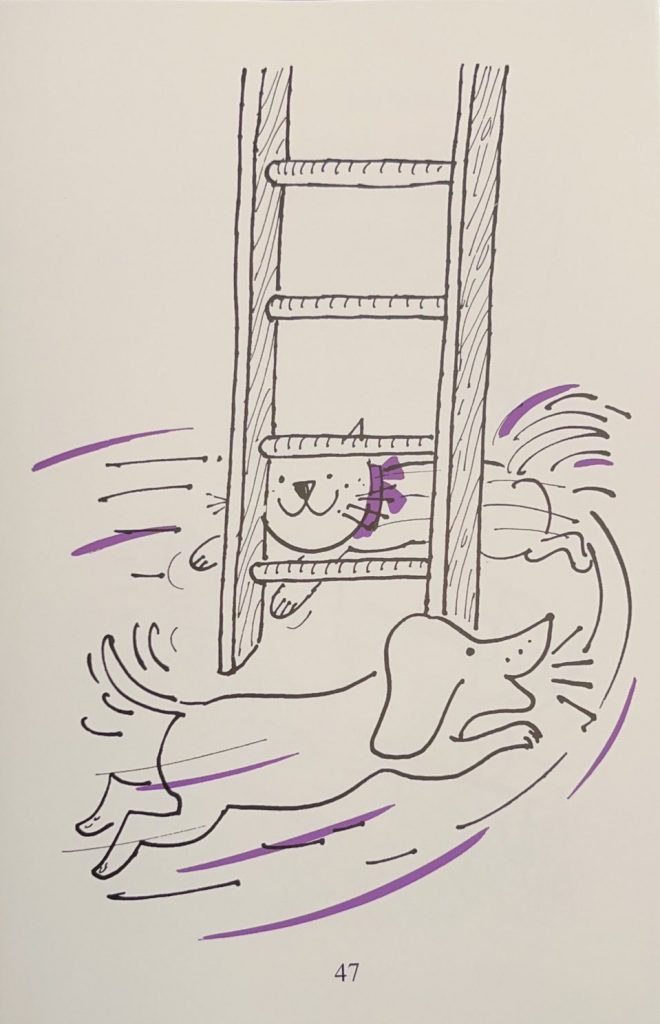
A bonus feature included in the Purple House Press edition of Mr. Pine’s Purple House is a letter from Leonard Kessler to his readers. In it, he answers questions many of his readers have asked him. Does he look like Mr. Pine? Is he really Mr. Pine? Children will have fun deciding for themselves.
You may buy this book at Purple House Press.
You may find more information on this book at biblioguides.com.
For more “Learning to Read” recommendations, please see the lists on our Early Readers page.